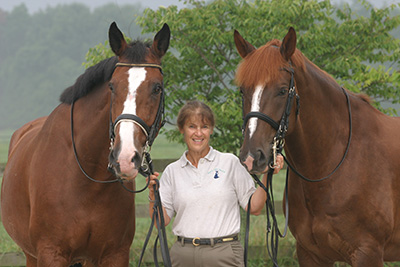
Written by: Leslie McDonald, USDF Gold, Silver and Bronze medalist & author
As the old saying goes, “All roads lead to Rome.” Unfortunately, that adage doesn’t necessarily apply to the myriad of philosophies that have evolved over the centuries to guide the journey of dedicated horsemen in their training pursuits. While some theories are spot on, not all are compatible with logic. Although many evolved from proven classical concepts, some bubble up from new age hocus pocus.
Throughout my years in the horse industry, I was fortunate to benefit from the expertise and inspiration of many gifted instructors. My quest for knowledge led me down a variety of aisles forged by each trainer from their own hard learned studies in the aisles of their respective mentors. Each bestowed on me their personal training philosophies in the “pass-it-on” tradition as I learned my way into the fraternity of instructors.
Over the years, I circled countless arenas under watchful eyes that forged the foundation of the instructor I was to become. When I finally felt confident to hang out my own professional shingle to invite students down the aisle I had crafted, it was with profound gratitude for all the sage knowledge I had absorbed from my mentors.
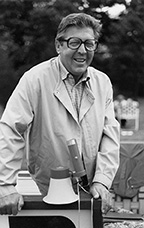
None of my mentors made a more lasting impression on me than the man I still find myself quoting in lessons decades after our first meeting. Major Anders Lindgren was the son of a Swedish cavalry officer. He was born in the 1920’s into the military tradition of horsemanship as the gauntlet passed from father to son. From early childhood, it was obvious that he had been gifted with an affinity for riding, evident from his delight the first time his father straddled him in front of his saddle.
It was a natural evolution for the boy to follow his father into the cavalry, ultimately rising to the rank of Major. For the next 30 years, the military was his passion and profession. His equestrian prowess resulted in winning the Swedish National Championships in eventing and dressage as well as representing his country in the Olympics. Finally, in 1975, he retired from the military to pursue a civilian coaching career.
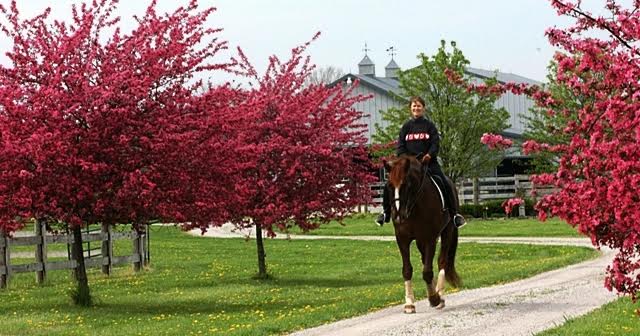
He first came to the attention of American dressage riders in the summer of 1981 as a coach at the 2nd annual National Trainers’ Symposium. Twelve aspiring instructors with horses ranging from Training to the FEI level were privileged to be invited to participate in the week long program that in later years would evolve into the USDF Instructor Certification Program.
We came from all corners of the U.S., eager for the opportunity to participate in this unique learning experience that combined classical theory with practical instruction. I was honored to be selected with as one of the fortunate 12. Heading east to Michigan, my pride at being chosen was tempered by the uncertainty of whether or not my horse and I would be up to this noted European master’s standards.
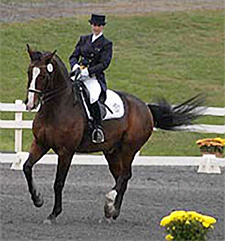
While all of the Symposium participants were awed by the depth of the Major’s credentials, none of us knew what to expect of his teaching style. Many European based instructors who cliniced in America were known for their gruff Gestapo-like tactics that made fear run through the veins of their students. Would our new Swedish mentor impatiently slap the whip against his boot with critical demands that were impossible to satisfy?
Our misgivings were quickly dispelled the opening session when we were welcomed into the arena by a ruddy smile and a hearty Swedish “Halla”. Despite broken English that required everyone to listen a little harder, it was evident from our first meeting that the Major was a master communicator. While some of the riders struggled to understand his phraseology, there was definitely no language barrier with the horses who instantly embraced him meaning whenever he borrowed their reins to personally clarify a point. As he emphasized in each lesson, “Every horse has something new to teach you. Be sure to listen.”
The needs of the horse were always put first with great emphasis on fairness. From this foundation, he took us back to traditional basics, underscoring the value of a patient training progression. This was clearly evident in one of his favorite sayings, “T-T-T. Things take time. T-T-T. Listen to the letters chime and do not forget.”
For that special Symposium week, we immersed ourselves in the rarified atmosphere of the Major’s systematic training that utilized creative gymnastic exercises and clever imagery to permanently imbed his message into our consciousness. His signature technique was the use of bright orange traffic cones to demarcate the patterns to be ridden. The baffling geometric maze that greeted us in the arena that first lesson evolved into an innovative, connect the dots system that improved precision and enhanced our navigational skills. The first purchase I made upon returning home was a set of a dozen orange cones from the local sporting goods store. 35 years later those now faded, well-worn cones are still a valuable resource in my teaching arsenal.
Our memorable mentor definitely had a flair for description as evident in the many colorful expressions that overflowed the margins of my notebook. His to-the-point humor was expressed in phrases like “Buns management,” “Play your instrument and conduct Bernstein with your supple wrists,” “Shuttle the bits,” “Sit straight and shine your breasts like headlights down the rail,” “Let the joints of your fingers be oil cans to lubricate the horse’s mouth,” and “Hurry slowly.” He had perfected verbal visualization to an art.
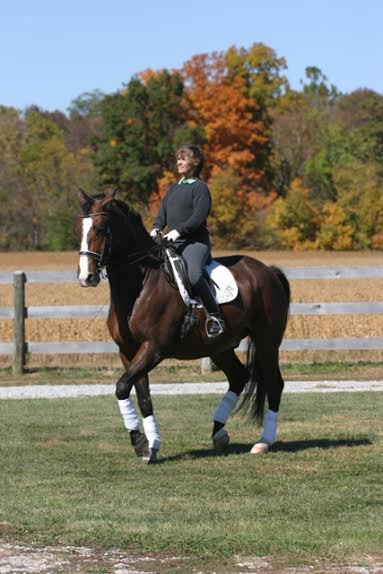
To this day, when one of my students is heavy in their hands, I still find myself singing aloud “Hanging in the Reins” which was the Major’s adapted version of Gene Kelly’s “Singing in the Rain.” It always has the amazing effect of causing the riders to instantly put their hands forward as I did so many years ago in response to his rich baritone notes. Ah, the persuasive power of song!
He was truly a teacher’s teacher, the consummate professional who inspired each of us to leave the Symposium better instructors, infinitely more mindful of ourselves, our horses and our sport. By the end of that special week, every participant was a confirmed believer. The Major was definitely the real deal. Taking a line from the movie, Jerry McGuire, he had us at “Halla.”
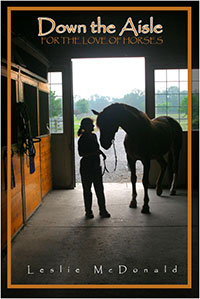
About the author: This story has been adapted from Leslie McDonald’s book, "Down the Aisle" in which Leslie uses the metaphor of a barn aisle to review her life with horses, with each stall down the aisle representing a defining moment in her career.
Leslie McDonald owns and operates Full Cry Farm Dressage Center in Batavia, OH. She is a US Dressage Federation Gold, Silver and Bronze medalist who has been active in the horse industry for over 50 years. She is the popular author of 4 books including Down the Aisle, Musings of a Horse Farm Corgi, Tic-Tac and Making Magic. A new book, Journeys with Horses, is in production for a summer release. Her books are available at amazon.com.































